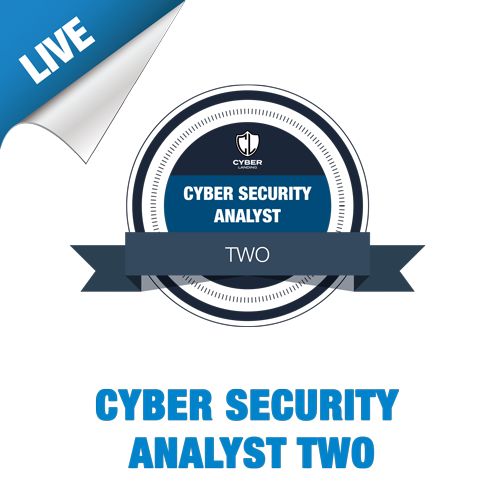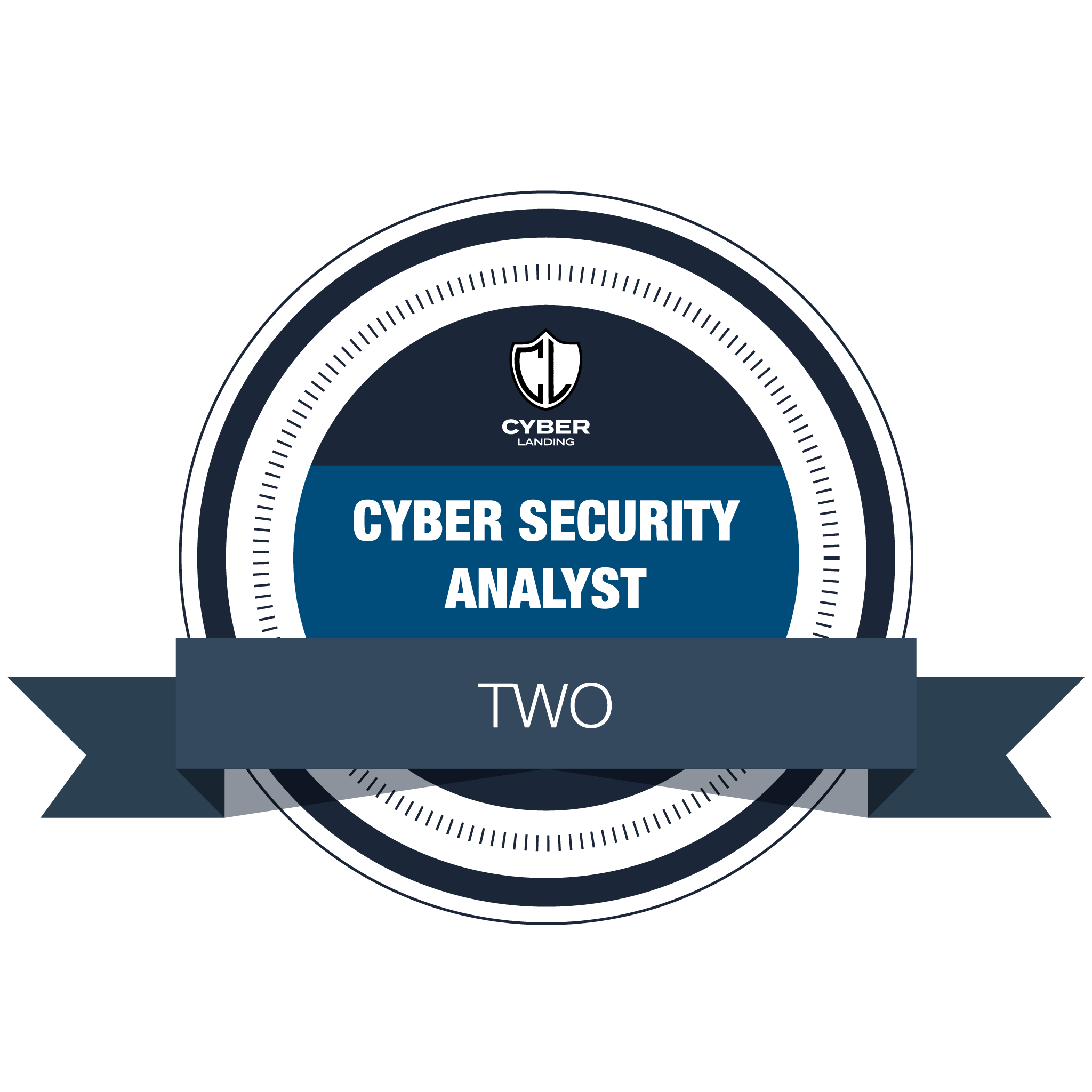Cyber Security Analyst Two Certificate
Identity, NetFlow, WAF, Threat Intelligence, Incident Response, 5 Practice Labs with 14 Use Cases.
Description

The Cyber Security Analyst Two Certificate gives you the skills and experience at the Cyber Security Specialist certification level.
Being an intense learn-at-your-own-pace program, you will cover only the most fundamental, relevant and in-demand topics including:
- Identity,
- NetFlow,
- WAF,
- Threat Intelligence
- and Incident Response.
In each of these modules you will complete 5 practice labs with a combined 14 use cases in total.
What is unique about what you'll experience is Cyber Landing's military-grade Cyber Range. Having real hands-on experience on a SOC simulator of this caliber will make you stand apart from the competition. Make no mistake. Not all Cyber Ranges are equal. In fact most are pale imitations of real-life, hard-core SOC environments and architecture.
The focus of SOCdrills is on real-life job training and practical skills that are in demand by the industry. This isn't your typical theoretical dive into the world of SOC you'll find at your local IT Training Department. You will be gaining the experience that SOC teams are screaming out for when you go for your job interview.
The certificate is engineered for IT graduates looking to get their foot in the door to their first job and current IT professionals wanting to cross-over into the more lucrative world of cyber security and to help to achieve proficiency in performing entry level and intermediate-level operations.
The Cyber Security Analyst Two Certificate is a training and credentialing program that helps you get the experience and technical skills desperately needed in the industry right now.
Certification

After you finish the Cyber Security Analyst Two Certificate with a score of at least 80%, you will get a Cyber Security Analyst Two Certificate in your email and entitled to other membership privileges and discounts.
However, should you wish to gain an entry level position into a SOC team it is highly recommended you complete Cyber Security Analyst Three Certificate & Mentoring Program.
Course Outline
Module 1
Identity eLearning presentation with knowledge checks throughout and a quiz at the end.
Module 2
Identity Lab 1. Brute Force, 2. Credential Stuffing, 3. Privilege Escalation
Module 3
NetFlow eLearning presentation with knowledge checks throughout and a quiz at the end.
Module 4
NetFlow Lab 1. C&C, 2. External Scan Reconnaissance, 3. DLP
Module 5
WAF eLearning presentation with knowledge checks throughout and a quiz at the end.
Module 6
WAF Lab 1. SQL Injection, 2. Cross Site Scripting.
Module 7
Threat Intelligence eLearning presentation with knowledge checks throughout and a quiz at the end.
Module 8
Threat Intelligence Lab 1. IP Reputation, 2. Domain Reputation, 3. Hash Reputation.
Module 9
Incident Response eLearning presentation with knowledge checks throughout and a quiz at the end.
Module 10
Incident Response Lab 1, 2 & 3.
Module 11
Your feedback keeps us on our toes. We want you to get your dream job in a world-class SOC.
Module 12
Optional eLearning Forum.
Prerequisites
-
Completed and passed Cyber Security Analyst One Certificate
-
CCNA or equivalent
-
Relevant IT based University Degree or Vocational Diploma
-
IT industry experience
Target Audience
Network and Security Administrators,
Network and Security Engineers,
Network Defense Analyst,
Network Defence Technicians,
Network Security Specialist,
Network Security Operator, and any security professional handling network security operations
Cybersecurity Analyst
Entry-level cybersecurity professionals
Anyone who wants to become a SOC Analyst.
SOC Path
The SOC is Evolving
Choose the Path that’s Right for You
-
Self-managed SOC
This model has an on-premises facility with in-house staff.
-
Distributed SOC
Or a co-managed SOC, this model has semi-dedicated full-time or part-time team members who are hired in-house to work alongside a third-party managed security service provider (MSSP).
-
Managed SOC
This model has MSSPs providing all SOC services to an enterprise. Managed detection and response (MDR) partners are another form of a managed SOC.
-
Command SOC
This model provides threat intelligence insights and security expertise to other, typically dedicated, security operations centers. A command SOC is not involved in the actual security operations or processes, just the intelligence side.
-
Fusion Centre
This model oversees any security-focused facility or initiative, including other types of SOCs or IT departments. Fusion centres are considered advanced SOCs and work with other enterprise teams, such as IT operations, DevOps and product development.
-
Multifunction SOC
This model has a dedicated facility and in-house staff, but its roles and responsibilities extend to other critical areas of IT management, such as the network operations centres (NOCs).
-
Virtual SOC
This model does not have a dedicated on-premises facility. A virtual SOC can be enterprise-run or fully managed. An enterprise-run SOC is generally staffed by in-house employees or a mix of in-house, on-demand and cloud-provided employees. A fully managed virtual SOC, also known as an outsourced SOC or SOC as a service (SOCaaS), has no in-house staff.
-
SOCaaS
This subscription-based or software-based model outsources some or all SOC functions to a cloud provider.